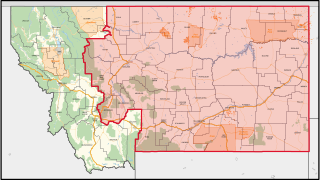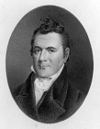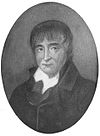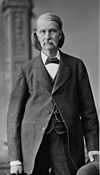
North Dakota's at-large congressional district is the sole congressional district for the state of North Dakota. Based on size, it is the eighth largest congressional district in the nation.

Maryland's 5th congressional district comprises all of Charles, St. Mary's, and Calvert counties, as well as portions of Prince George's and Anne Arundel counties. The district is currently represented by Democrat Steny Hoyer, who from 2007 to 2011 and from 2019 to 2023 was House Majority Leader.

The 16th congressional district of Ohio is an obsolete United States congressional district last represented by Representative Anthony Gonzalez (R). It was last located in the northeast of the state, covering Wayne County and with arms extending north into the suburbs of Cleveland, and east into Greater Akron and Stark County. The district was eliminated upon the swearing in of the 118th United States Congress on January 3, 2023, as the reapportionment after the 2020 census reduced the number of congressional districts in Ohio to fifteen.
New Jersey's 14th congressional district in the House of Representatives was eliminated after the 1990 census. As a result of the congressional apportionment performed after this census, New Jersey lost one seat and was reduced to thirteen seats in the House of Representatives.
The U.S. state of Pennsylvania elected its United States representatives at-large on a general ticket for the first and third United States Congresses. General ticket representation was prohibited by the 1842 Apportionment Bill and subsequent legislation, most recently in 1967.

Montana's 1st congressional district is a congressional district in the United States House of Representatives that was apportioned after the 2020 United States census. The first candidates ran in the 2022 elections for a seat in the 118th United States Congress.
In 1913, Oklahoma was apportioned three additional congressional seats. For just the 63rd United States Congress, those three members represented the state at-large.
Alabama's 8th congressional district, now obsolete, was established in 1877.
Alabama's 9th congressional district was formerly apportioned to portions of central and western Alabama from 1893 until 1963 when the seat was lost due to reapportionment after the 1960 United States census.
The state of Colorado was represented in the United States House of Representatives by one member of the House, elected at-large from 1876 until 1893 and from 1903 until 1913, and by two members at-large from 1913 until 1915. Since the 1914 elections, all members from Colorado have been elected from congressional districts.
Florida's at-large congressional district may refer to a few different occasions when a statewide at-large district was used for elections to the United States House of Representatives from Florida. The district is obsolete.
On three occasions in New York history, some members of the United States House of Representatives were elected statewide at-large. This was due to an increase of the number of representatives after the previous federal census, and the failure of the State Legislature to re-apportion the congressional districts in time for the next election.
From statehood in 1867 until 1883, Nebraska had only one congressional district. Its representative was elected at-large statewide.
Vermont's 5th congressional district is an obsolete district. It was created in 1821. It was eliminated after the 1840 census. Its last congressman was John Mattocks.
Vermont's 6th congressional district is an obsolete district.
South Carolina was readmitted to Congress in 1868, after passage of the 14th Amendment. That amendment ended the three-fifths rule effectively raising the population of states that once had slavery. As a result, South Carolina and other slave states tried to seat extra members of Congress. South Carolina choose two additional congress members during an at-large election in 1870. In one of those, Johann Peter Martin Epping defeated Lucius W. Wimbush by 61 votes: 71803-71742. But the House refused to seat him and the other at-large winner. "A number of southern states upon readmission claimed that since their slaves were emancipated, they were entitled to larger delegations in the House. Epping's election falls in this category. The claims were rejected by the House."

Montana's second congressional district is a congressional district in the United States House of Representatives that was apportioned after the 2020 United States census. The first candidates ran in the 2022 elections for a seat in the 118th United States Congress.

The 4th United States Congress was a meeting of the legislative branch of the United States federal government, consisting of the United States Senate and the United States House of Representatives. It met at Congress Hall in Philadelphia, Pennsylvania, from March 4, 1795, to March 4, 1797, during the last two years of George Washington's presidency. The apportionment of seats in the House of Representatives was based on the 1790 United States census. The Senate had a Federalist majority, and the House had a Democratic-Republican majority.

Idaho's 2nd congressional district is one of two congressional districts in the U.S. state of Idaho, in the eastern portion of the state. Beginning with the 2012 election, the district expanded westward and now includes most of Boise, the state capital and largest city. The district is currently represented by Mike Simpson, a Republican of Idaho Falls. A former dentist in Blackfoot, he was first elected in 1998; the seat opened when his predecessor Mike Crapo successfully ran for the U.S. Senate.
Oklahoma's 7th congressional district was a district that existed from 1915 through 1953, covering the southwestern portion of the state.











